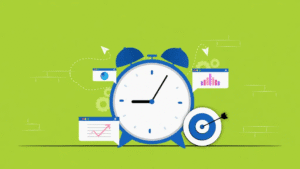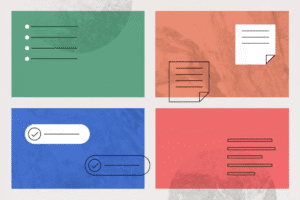 Why Time Management Matters for Students and
Why Time Management Matters for Students and
Time management is the needful allotment of time to specific activities in your day so that all activities and tasks are meaningfully accomplished. Students need to learn the art of discipline to manage time successfully. Apart from studies, most students participate in various co-curricular activities and hobbies in their daily lives. Proper time management makes it possible to complete all activities smoothly. This article will discuss the importance of time management in a student’s life.
Consequences of Poor Time Management at Work
Failing to manage time effectively in a professional setting can lead to various negative outcomes that impact performance, career growth, and well-being. Some common consequences include
● Missed deadlines and appointments
● Increased procrastination and reduced focus
● Declining professionalism and credibility
● Inefficient workflow and reduced quality of work
● Higher stress and burnout
● Damaged professional reputation
● Strained relationships with colleagues and clients
● Financial losses due to delays or errors
● Lack of work-life balance
1. Pomodoro Technique for Focused Work and Study Sessions
The Pomodoro Technique: A Clever Way To Stay Productive While Working And
Studying
What is the Pomodoro Method?
The Pomodoro Technique is a time management method to improve work focus and productivity by dividing work into timed blocks. Interval sprints are alternating with rest and are perfect for staying focused while not overloading yourself. It’s particularly useful for students and workers alike who need to remain focused for an extended duration. Your motivation goes up naturally when you are aware of a break coming.
The Benefits of Employing the Pomodoro Technique:
● Increases focus, minimizes distractions
● Aids in preventing mental fatigue
● Big projects look small; projects already in progress seem more manageable
● Bears a message that motivates steady progress toward an end goal or project accomplishment.t Does the Pomodoro Technique Suit You?
● You might want to try this method of hacking if:
● You feel overwhelmed by how much you need to write or revise
● You’re distractible — by social media, cleaning, or anything other than studying
● You struggle to get started or remain on track
● You’re pressed for time and want to be as efficient as possible with your edits.
How You Can Implement the Pomodoro Technique
First, start with a timer on your phone, or try a Pomodoro app. “Pomofocus” is a popular web-based choice that allows you to create task lists and change the length of your session time and breaks.
● Below is an example of an ideal study session for two hours:
● 25 minutes—focused work
● 5 minutes—short break
● (Repeat 3 more times.)
● 4 sessions—Break for longer (15–30 minutes). Featuring breaks is so important — they prevent burnout and get your brain working well with the information. During long breaks, get away from your workspace. Take a walk, eat something healthy.
Best Pomodoro Apps for Students
Want a digital helper? The apps below are excellent for tracking your sessions.
● Pomodoro Timer (Android)
● Pomofocus (Web)
● Be Focused (iOS)
● Focus To- o—tasks with timers combined
● Forest— Grow A Tree As You Stay Focused
● Aesthetic Selections—Study Bunny, Study With Me, Astrostation, Pomodoro Kitty
What is ADHD?
ADHD stands for attention-deficit/hyperactivity disorder. It’s a common neurodevelopmental condition that affects both children and adults. People with ADHD may have trouble focusing, staying organized, following through on tasks, or sitting still for long periods. Symptoms generally fall into two categories:
1. Inattention
● Difficulty sustaining attention
● Forgetfulness
● Trouble organizing tasks
● Easily distracted
2. Hyperactivity and Impulsivity
● Fidgeting or restlessness
● Talking excessively
● Interrupting others
● Acting without thinking
Can the Pomodoro technique help with ADHD?
Yes! The Pomodoro method is particularly useful for students with ADHD as it:
● Provides short, structured study sessions so you don’t have to focus for too long.
● Encourages regular breaks to avoid burnout and overwhelm.
● Helps reduce procrastination by making study time feel more manageable.
Want more tips on revising with ADHD? Read our article or watch the video here.
What can I do during my 25-minute revision sessions?
Try out some of our most effective revision techniques, like blurting, active recall,
or spaced repetition.
2. Eisenhower Matrix: Prioritize Tasks Effectively
What is the Eisenhower Method?
The Eisenhower Matrix is a method to prioritize tasks by urgency and importance. It teaches you how to manage your time and assets effectively, how to respond, and about the owner structure. This approach is based on words from former American president Dwight D. Eisenhower, who once noted the importance of separating urgent tasks from important ones. This concept eventually became known as:
● The Eisenhower Box
● The Time Management Matrix
● The Urgent-Important Matrix
Why Use the Eisenhower Box?
This tool is most useful when you have an enormous number of things to do on your list. By offering to show you:
● Act on tasks immediately
● Plan ahead when it comes to long-term goals
● Outsource sub-chain and time-critical tasks
● Get rid of distractions that do nothing for your goals
● Urgent vs. Important: What’s the Difference?
● It very well sounds like that, but urgent and important are not interchangeable.
● URGENCY: The tasks you’ve got to do right now because they have urgent deadlines. And postponing them can lead to stress or missed opportunities.
Examples:
● Reply to email on the fly
● Submitting a report due today
● Solving an urgent problem in the home
● Critical To-Dos help to support that growth, helping you reach your goals in the end. They may not need to be done today, but they are important to him.
Examples:
● Developing a career plan
● Developing a rapport with the clients.
● Scheduling regular exercise
● Recognizing this distinction is essential for making more informed decisions about how to allocate your time.
● The 4 Quadrants of the Eisenhower Matrix.x To make this happen, break down your tasks with this four-part system:
🔴 Quadrant 1: Do First
Things that were both urgent and important. These require your intervention as soon as possible and can carry serious consequences if put off.
Examples:
● Attending a critical meeting
● Finishing a project a few hours ahead of time
🟡 Quadrant 2: Plan Ahead
Important, but not urgent tasks. These are necessary for long-run progress but do not require immediate action. Put them on your calendar, and keep to it.
Examples:
● Learning a new skill
● Crafting a business plan
● Health and fitness routines
The Pomodoro Technique, or the Pareto Principle (otherwise known as the Rule), is are tool that can be used to tame this quadrant.
🔵 Quadrant 3: Delegate
Activities that are both urgent and important. These are all due soon, but they don’t necessarily require your talent. Give them to someone else whenever you can.
Examples:
● Making regular appointments
● Replying to Not-so-different questions
● Administrative follow-ups
⚫ Quadrant 4: Eliminate
Jobs that are not urgent and not important. They aretime-wasters withoutt any worth of incorporating into your time. Take these people off your list and remain focused.
Examples:
● Scrolling too much on social media
● Unnecessary meetings
● Repetitive tasks that lead nowhere
Final thoughts
The Eisenhower Matrix is more than a productivity hack — it is a change in mindset. By religiously categorizing your tasks in these four compartments, you will be less stressed, more productive, and concentrate on what really matters.
 3. 80/20 Rule (Pareto Principle): Maximize Results
3. 80/20 Rule (Pareto Principle): Maximize Results
Understanding the 80/20 Rule
The 80/20 rule, also known as the Pareto Principle, states that 80% of the outputs come from 20% of the inputs. In practicality—particularly for business—this means that it enables you to understand what gives you the greatest returns, and therefore where you must spend your resources. But it’s not just for businesses. This rule can be extended to almost every aspect of life, whether it’s fitness, a hobby, or your own personal development.
What the 80/20 Rule Really Means
The rule is, at the bottom, an example of the fact that resources should be allocated in order of priority. Whether you’re leading a team, growing your personal brand, or trying to master an instrument, the majority of your gains often come from a tiny sliver of concentrated effort. With that said, that doesn’t mean you should totally ignore your weaker areas, though. It doesn’t mean giving 110%, just a more judicious application of one’s time and energy for better results.
Investing With the 80/20 Rule
Applied to investing — where it is known as the Pareto principle — this might mean focusing your money on a much smaller group of stocks or assets that are likely to provide most of the returns, such as the top-performing 20 percent of companies in a large index. Or, you might want to diversify your investments with 80% in lower-risk instruments (like index funds) and 20% in more aggressive investments. Do keep in mind, however, that investment strategies should always be reassessed periodically since past performance is not an indication of future results.
How an Intel Partner Used The Ivy Lee Method to Improve His Productivity (And You Can Too)
The Ivy Lee Method is a simple productivity hack developed more than a century ago and can be effective to this day. It’s a nightly routine that sets you up for a perky, productive day.
Final thought
The key takeaway? Start every day by working on your highest priority item. This straightforward habit can dramatically increase the output of your work, freeing your mind and clearing the fog from your workflow— no fancy tools needed.
4. The Ivy Lee Method: The Daily Routine for Peak Productivity
 The Ivy Lee Method
The Ivy Lee Method
The Ivy Lee Method is a simple productivity strategy that was developed more than a century ago, and it remains one of the most efficient ways of making the most of your day. It’s a nightly ritual to prepare you for a day full of focused productivity. Here’s How It Works: At the end of each workday, write down the six most important things you need to do tomorrow. Avoid going beyond these items.
● Sort those tasks in some sort of order.
● The next day, simply do task #1 for as long as it takes.
● MOVE TO THE NEXT TASK: Apply the same rule for each one at a time.
● Any tasks not yet completed are moved to a new list for the next day.
● Repeat this process daily.
This technique was so effective for Charles Schwab, president of Bethlehem Steel, that he supposedly paid Ivy Lee $25,000 for his advice, which would be hundreds of thousands of dollars now.
Why the Ivy Lee Method Works
Strength in simplicity: The method doesn’t seem overly complex. It’s easy to follow and stick with — even when life is busy — and the results aren’t bad, either. It builds discipline: When you have only a few things to get done, you have to make a choice about what’s most important, and it cuts through the noise and distractions. Momentum counts: The fact that you already know your No. 1 task means you’ll hit the ground running each morning, which in turn makes it easier to build momentum. Single-tasking is best: In the age of multitasking, the Ivy Lee Method of focusing on one task at a time helps bring it back into focus. The good results are from focus, not distraction.
5. Eat That Frog: Overcome Procrastination
How to ‘Eat at Frog’ and Get More Done Faster
One of the most powerful things you do to become more effective is to get into the habit of getting your most important task—your frog—done first thing in the morning. This is not just a productivity hack; it’s a chacan nge in mindset that values focus and action over delay and distraction. It’s a common characteristic of successful people: they don’t delay on high-impact tasks. They start their day by diving right into their single biggest priority, which they continually overthink. So here’s a practical, positive approach to how you can use this concept.
Start With the Right Mindset
Optimism is fuel for motivation. It’s because when you feel joy, your brain releases a flood of endorphins — that happy-feeling, feel-good chemical that promotes a sense of self-belief, focus, and gentle invincibility. Eventually, accomplishing significant tasks will become something your brain desires. You can activate this reward system oregularlyby establishing goals, especially with the SMART system (Specific, Measurable, Achievable, Relevant,
Time-bound). The more things of value you accomplish, the more motivated and fulfilled. After a while, the force of this habit takes over, and a willingness to plow ahead on high-yield matters feels like second nature.
Skip the Shortcuts
No, you can’t cheat your way to long-term success. You can pour in endless counsel and tools, but progress demands daily doses of exertion and patience. This kind of solid command takes time, and practice is the whetstone of your abilities. The good news? Your brain is malleable, like a muscle. You can develop the skill of staying focused, sticking to it, and getting things done with enough practice and determination. When you break through the resistance and get that big thing done, the sense of accomplishment becomes addictive — in a good way.
Focus on One Big Task at a Time
If you have more than one major project coming at you, don’t try to do it all at the same time. Prioritize the highest leverage or hardest task to work on first. Attempting to multitask high-priority work results in burnout and poor quality of work.
Single-tasking is the key to sustainable productivity. Start with the action that is the most difficult and the most meaningful, and finish before you move on. This is an approach that helps you avoid overwhelm and do what makes you most effective.
Action Is Everything
The line between a great idea and true success is action. High achievers swiftly transition between the planning and execution process. They’re all about output, not busy work. Meetings and conversations are all well and good, but they are empty vessels without follow-through.
Consider the aspiring writer, for example. It’s just a dream at that point until they ‘Goal’, ‘Block’ time, and ‘Sharpen’ their pencils (yes, technically you could do the first few pages in pen and still call it a screenplay in formation). Whether it’s writing that book, starting that business, or developing that habit, nothing happens
without action. To help you decide how to keep clicking, ask yourself: If you can only get one thing done today, which one thing will bring about the most positive impact? Begin there — and don’t stop.
6. Best Time Management Apps for Students and Professionals
Digital tools can be game-changers for staying organized and managing time efficiently. Here are some top-rated time management apps:
● Todoist: Task and project management for individuals and teams
● Trello: Visual project tracking with boards and cards
● Notion: All-in-one workspace for notes, tasks, databases, and collaboration
● Forest: Focus timer with a gamified approach
● Google Calendar: Schedule classes, meetings, deadlines, and reminders.T hese apps can help both students and professionals stay on top of assignments, projects, meetings, and responsibilities.
7. Benefits of Time Management in a Student’s Life
Here are the key reasons why mastering time management is essential for students:
● Organising and Prioritising Work
Time management helps students structure their study time based on subject difficulty and importance. Focusing more time on demanding topics accelerates syllabus coverage and builds subject clarity.
● Finishing Maximum Work in Minimum Time
Breaking down work and sticking to deadlines helps students complete tasks efficiently. For example, setting time goals while practicing Class 10 Physics or Math ensures focused and swift completion.
● Reducing Stress
With proper planning, students can finish lessons and revise on time, reducing
anxiety. For example, preparing structured sessions for complex topics like
electricity in physics eases the load before exams.
● Preventing Procrastination
A well-planned routine discourages delay. Students who follow daily study
schedules, especially in math and science, are better prepared and more confident
during assessments.
● Reaching Goals Faster
Prioritizing and tracking tasks allows students to move steadily toward academic goals. Frequent reviews of subjects like Class 9 and 10 math and physics make preparation more effective.
● Balancing Academics and Hobbies
Efficient time allocation gives students room to enjoy co-curricular activities and hobbies. They can study consistently and still participate in music, dance, or sports.
● Personal Development
Time management builds discipline and decision-making skills. It lays a strong foundation for handling future academic and professional responsibilities with ease.
Conclusion: Build Better Habits with Time Management Strategies
Effective time management is crucial for both students and professionals, promoting productivity, reducing stress, and ensuring a balanced life. Techniques like the Pomodoro Method, Eisenhower Matrix, and Ivy Lee Method help prioritize tasks and prevent procrastination. Tools and habits that foster discipline enable individuals to accomplish more in less time, leading to academic, personal, and professional success.

